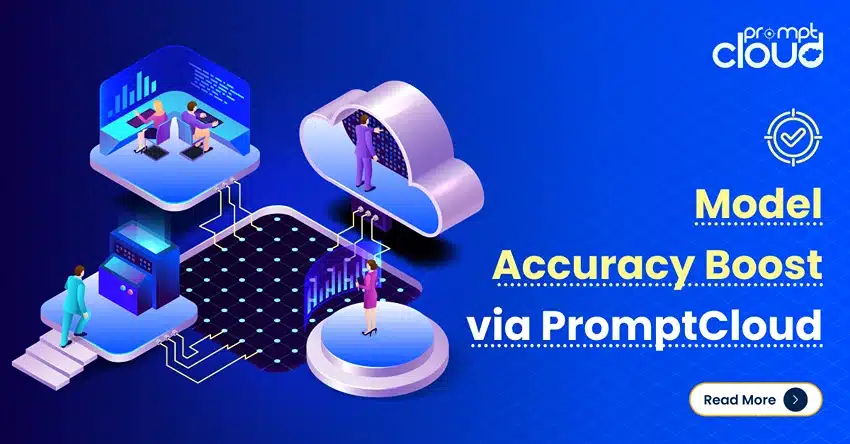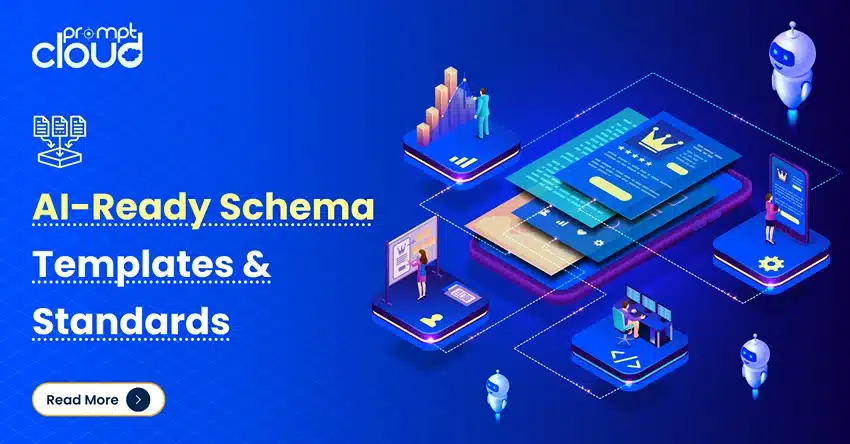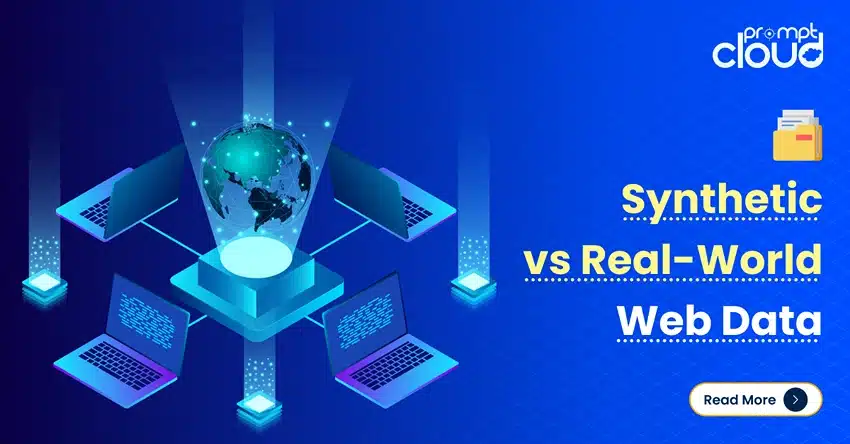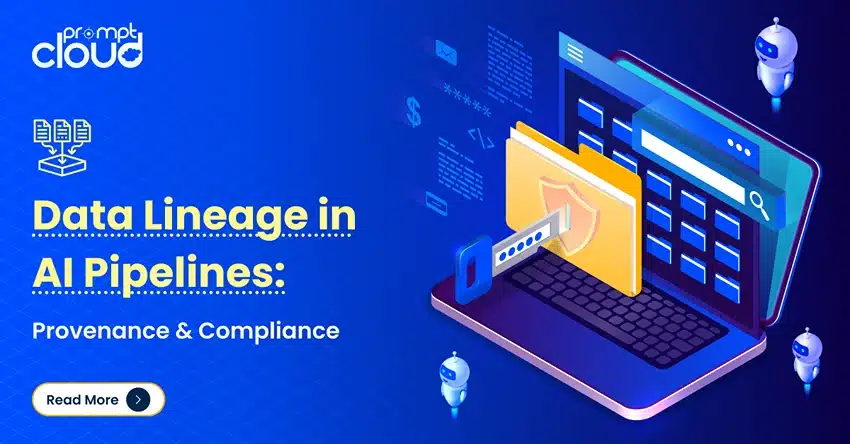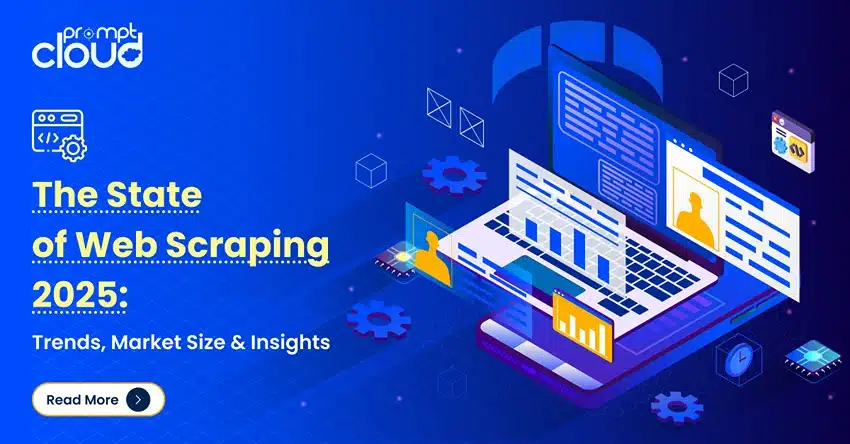**TL;DR:**
Tracking your competitors isn’t just helpful anymore, it’s kind of necessary. Every industry is moving fast, and if you’re not watching what others are doing, you could be losing out without even knowing it. Here’s the gist:
- Competitors change things constantly—prices, promos, product lines, messaging. One update can shift traffic or sales.
- Manual tracking doesn’t scale. You can’t refresh 10 competitor websites every morning. No one has time for that.
- Website data scraping services solve this by pulling info automatically from public sites and organizing it so teams can act on it.
- Retailers use it to adjust pricing fast, without tanking margins.
- Travel companies rely on it for monitoring fare changes and dynamic pricing across OTAs.
- Banks and fintechs track offers and features to stay competitive on more than just rates.
- Food brands use it to spot product trends early, before the shelf gets crowded.
Bottom line? Competitor data helps you make smarter calls. You’re not guessing. You’re reacting faster, or better yet, moving first.
Knowing What Your Competitors Are Up To
Let’s say you run a small e-commerce store. One day, you check your sales dashboard and notice things are slow. Really slow. You do a little digging and realize your biggest competitor just slashed their prices. Of course they did. And you had no idea until now.
It’s frustrating, right?
This kind of thing happens all the time, in every industry. Retail, travel, banking, restaurants—you name it. Somebody makes a move, and if you’re not watching closely, you’re left reacting instead of staying ahead. That’s why keeping tabs on competitors isn’t a nice bonus anymore. It’s survival.
This is where competitor tracking steps in. It’s about seeing what others are doing—pricing, promotions, new products—so you’re not caught off guard. It doesn’t mean you copy them. It just means you’re informed. You know where the market’s shifting before it shifts under your feet.
And let’s be honest: nobody has time to sit around checking ten different websites every day. That’s why more companies now use website data scraping services. These tools collect public info from competitor sites—stuff like prices, product updates, discounts—automatically. You get clean, updated data without lifting a finger.
In this article, we’re going to walk through how different industries are using competitor data to stay sharp. You’ll see how retail brands use it to adjust pricing, how travel companies track fare changes, how banks spot trends, and how food brands catch shifts early. If staying competitive matters to your business, tracking your rivals just might be one of the most important things you do.
How Retailers Use Competitor Price Tracking to Stay in the Game
Retail is one of the most competitive spaces out there, especially when pricing can change multiple times a day. To stay ahead, brands are turning to real-time competitor price tracking to make faster and smarter pricing decisions.
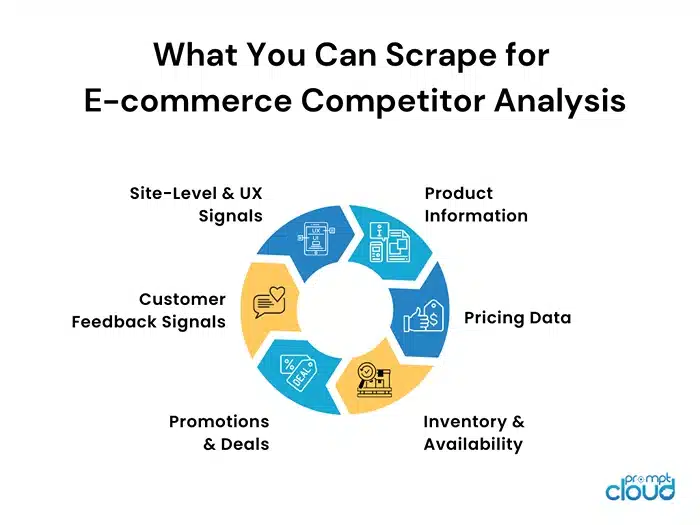
Price Wars Aren’t Just for Big Brands Anymore
In retail, pricing is a moving target. And customers? They’re watching every cent. One day, you’ve got the best price on a product. The next day, a competitor knocks theirs down by five bucks—and just like that, they’re winning your traffic.
Real-Time Competitor Tracking Makes a Difference
Back in the day, retail teams might spend hours manually checking prices on rival sites. But that doesn’t scale—not when your competitors are changing prices every few hours. That’s where competitor tracking comes in. The idea is simple: get accurate data on what your competitors are charging, and do it often enough that you can actually use it.
Website Data Scraping Services: Your New Pricing Ally
This is where website data scraping services step in. These tools scan public websites and pull information—like pricing, product availability, and promotions—on a regular schedule. No need for guesswork. Just updated the data you can actually act on.
Using Competitor Price Tracking to Make Smarter Calls
Say you’re a mid-sized clothing brand. You’ve got your price points dialed in—until a competitor starts pushing markdowns ahead of the holiday season. If you’re not tracking their moves, you’ll miss that drop. But if you’ve got competitor analysis data feeding into your dashboard, you can respond quickly. Maybe you match them. Or maybe you try a different tactic. Either way, you’re not left in the dark.
How Travel Companies Use Competitor Data to Track Dynamic Fares
In travel, prices shift constantly, and travelers notice. That’s why companies in this space rely on competitor data to stay in sync with fare changes and stay competitive.
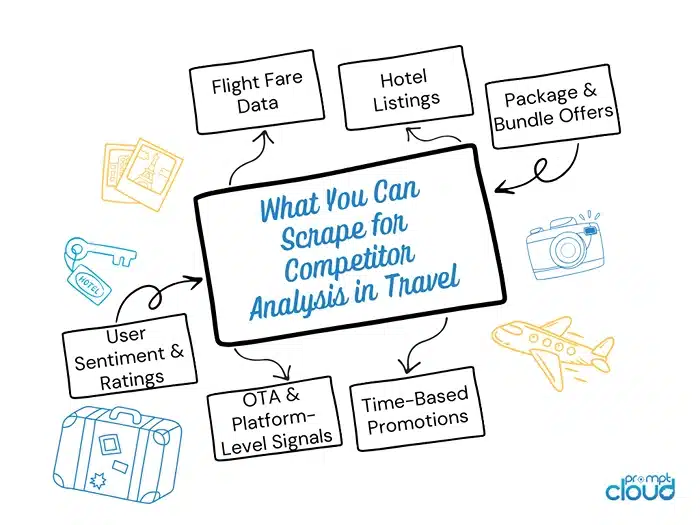
Prices Change Fast and Travelers Notice
In travel, prices swing around like crazy. One day, a flight is $280. Later that afternoon, it’s $420. And it’s not just flights, hotels, car rentals, and even travel insurance that change based on demand and time.
Travelers Compare Everything—So You Have To
People don’t book blindly. They open tabs, check deals, and wait for the right moment. If your competitor drops their fare or adds a last-minute perk, and you don’t know about it? You lose the booking. Simple as that.
Why Scraping Competitor Data Works So Well for Travel
That’s where website data scraping services help. They can pull current fares, offers, availability, and even promo language from other public listings. So instead of guessing why bookings dipped, you see what changed—and where.
Real Example: Fare Tracking in Action
Say your OTA sees a drop in conversions on a key route. You check the competitor data and find that two rival sites have launched a flash fare. You didn’t match them, so customers clicked away. But now that you’ve got the data? You can react. Or better yet, next time, you catch it early and beat them to it.
Why Financial Services Are Turning to Competitor Data for Smarter Positioning
In finance, it’s not just about having a good product; it’s about knowing how others are presenting theirs. Tracking competitor data gives banks and fintechs a clearer picture of what’s happening across the market.
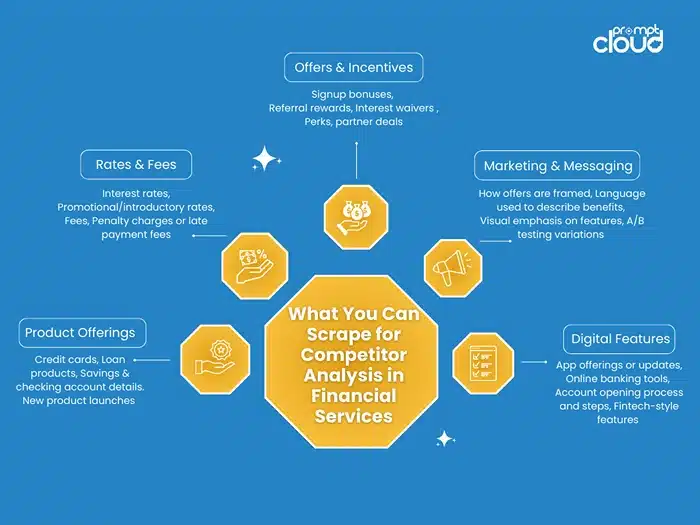
It’s Not Just About Rates Anymore
In finance, the numbers matter—but the messaging matters more. A 1.5% APR is one thing. Saying “cut your payments by $500 this year”? Totally different impact.
Customers Shop Around—So Should You
When people compare loans or credit cards, they look at a lot more than just rates. Terms, perks, points, mobile app features—it all matters. If your competitor adds a cashback reward or waives annual fees, you’d better know about it. If not, they win the customer before you even know you were in a fight.
Website Data Scraping Helps Cut Through the Noise
With website data scraping services, teams can track what competitors are promoting across banks, fintechs, and credit unions and see the updates as they happen. That helps product and marketing teams make real decisions based on what’s actually live in the market.
A Practical Win for Product Teams
Let’s say your team sees several competitors roll out new cards targeting younger customers—no fees, mobile-first features. That trend tells you something. You don’t have to copy it, but you can rethink your positioning. That’s the power of competitor analysis data—it gives you the full picture, not just a snapshot.
How Food and Beverage Brands Use Competitor Tracking to Stay Fresh
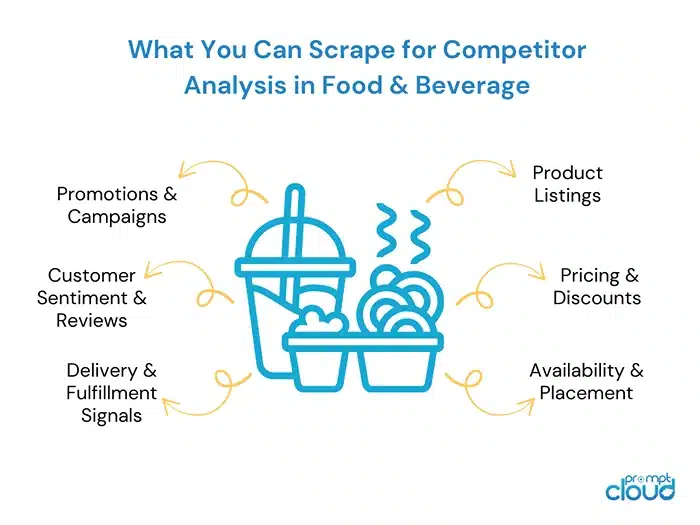
Food and beverage trends move fast, and customers are quick to jump to the next big thing. Brands in this space use competitor tracking to spot those shifts early and stay ahead of the curve.
In This Market, Timing Is Everything
Food trends move fast. One minute, it’s low-sugar everything. Next, it’s plant-based protein bars with probiotics. If your team misses that shift, you’re reacting months later—and by then, someone else owns the trend.
Product Changes, Promos, and Packaging Shifts—They All Matter
In F&B, competitor tracking isn’t just about prices. It’s about SKUs, deals, positioning, shelf presence, and even the way flavors are marketed. New bundle launched on Instacart? That’s competitor data worth knowing.
Scraping Competitor Websites Gives You the Full Picture
Most teams don’t have the time to scan every e-commerce page or brand website. That’s why F&B companies lean on website data scraping services to keep tabs. New products, limited editions, BOGO offers, they’re all signals. Signals that help your team stay sharp and adjust faster.
What It Looks Like in the Real World
You’re running ops at a frozen foods brand. You notice your competitor just added three breakfast items to their Instacart lineup. You wouldn’t know that without scraping tools. Now you’ve got a heads-up. You can speed up your rollout or adjust your messaging to cut through the noise.
That’s the kind of agility that keeps brands relevant.
The Pain of Manual Competitor Tracking (And Why It Doesn’t Scale)
If you’ve ever tried to track competitors the old-fashioned way—opening dozens of browser tabs, copying prices into a spreadsheet, trying to remember what changed since last week—you already know it’s exhausting.
And it’s easy to miss things. One update gets pushed to a product page at 9 p.m. You don’t catch it until two days later. By then, your sales team is already asking why traffic dropped off.
Here are a few common headaches teams run into when competitor tracking isn’t automated:
- Too much noise, not enough insight. You might be grabbing random data points, but without context or structure, it’s hard to spot real trends.
- It burns through time. Manually tracking prices or changes across 10+ sites? That’s hours every week—and those hours add up.
- It’s inconsistent. Human error creeps in. One missed screenshot or wrong copy-paste and the whole comparison falls apart.
- It’s reactive, not proactive. Without real-time updates, you’re always chasing what already happened.
This is why teams that rely on manual tracking often end up stuck in “scramble mode.” Always responding, never leading. That’s not sustainable, especially when competitors are moving fast.
Automation doesn’t just make life easier. It gives you the kind of consistent, structured competitor analysis data that teams can actually build strategy around.
Staying Ahead Starts With Paying Attention
The truth is, you don’t need to outspend your competitors. You just need to outsmart them. And that starts with knowing what they’re up to, before it hits your bottom line.
Across industries—retail, travel, finance, food—companies are using competitor tracking not just to keep up, but to lead. They’re watching price drops, new products, shifting promos, even how websites are changing over time. It’s not spying. It’s being smart. And in today’s market, smart wins.
The thing is, no one has the time to track it all manually. That’s where website data scraping services become a real advantage. They don’t just give you data. They give you time. Clarity. Room to breathe and make decisions with your eyes open.
You don’t need to react to every little move. But with the right competitor data, you’ll know when it’s worth reacting—and when it’s time to make the first move yourself.
Because staying competitive? That’s not about watching the clock. It’s about watching the field.
How PromptCloud Helps Businesses Make Sense of Competitor Data
Let’s be real, getting good data is one thing. Making sure it’s the right data, delivered in a way your team can use? That’s a whole other challenge.
That’s where PromptCloud comes in.
PromptCloud offers custom website data scraping services that help companies collect competitor insights from the sources that matter most to them. You’re not stuck with generic dashboards or pre-set templates. Instead, you tell PromptCloud what kind of data you need—product prices, travel fares, promotions, new listings, financial offers, anything—and they build the crawler and delivery flow around that.
It’s not just about scraping for the sake of it. The idea is to automate competitor tracking without the noise. You get clean, structured data from public websites in real time or on a schedule—delivered however you want, whether that’s through an API, cloud storage, or flat files.
That means no more jumping between tabs or chasing screenshots. You just get the data and focus on what to do with it.
We work with all kinds of teams—retail folks watching prices, travel companies tracking fare changes, finance teams keeping an eye on new offers, even food brands spotting trends. The industries may be different, but the goals are always the same: see what’s happening out there, move faster, and make better calls before the market shifts. Schedule a demo today!
FAQs:
1. What kind of competitor data are we talking about?
Depends on what you’re after. Could be pricing, sure, but also stuff like when they add new products, how they describe things, promo banners, even if they suddenly move a category up their homepage. If you can see it without logging in, it’s probably trackable. We’ve had people track stuff I wouldn’t have thought of—like when “back in stock” alerts go live.
2. Do I get the data daily or… how often?
That’s kind of flexible. Some people want it once a day, some want it every few hours. Depends how fast things move in your market. We’ve worked with teams that want hourly updates during sale events and just weekly snapshots the rest of the time. There’s no one rule for it.
3. Is scraping legal though? Like… can I actually do this?
Short answer: yeah, as long as you’re only grabbing stuff anyone can see. No logins, no paywalls, no trickery. Just public data. PromptCloud plays it safe—strict about staying on the right side of things. If you could open it in a browser without logging in, it’s fair game.
4. What format does the data come in? I don’t want to deal with a mess.
Yeah, no one wants junk data. You tell them what you need and how you want it. Some teams get CSVs. Others like JSON or files sent to S3 buckets or Dropbox. We’ve seen all sorts. It’s cleaned up and usable. You won’t have to mess with it much.
5. Do I need to know how to code or do any setup?
No, not at all. That’s handled for you. You just say what you want and where it’s coming from. The team sets everything up on their end. You’re not maintaining anything or writing scripts or trying to fix broken crawlers. You just get the data.









